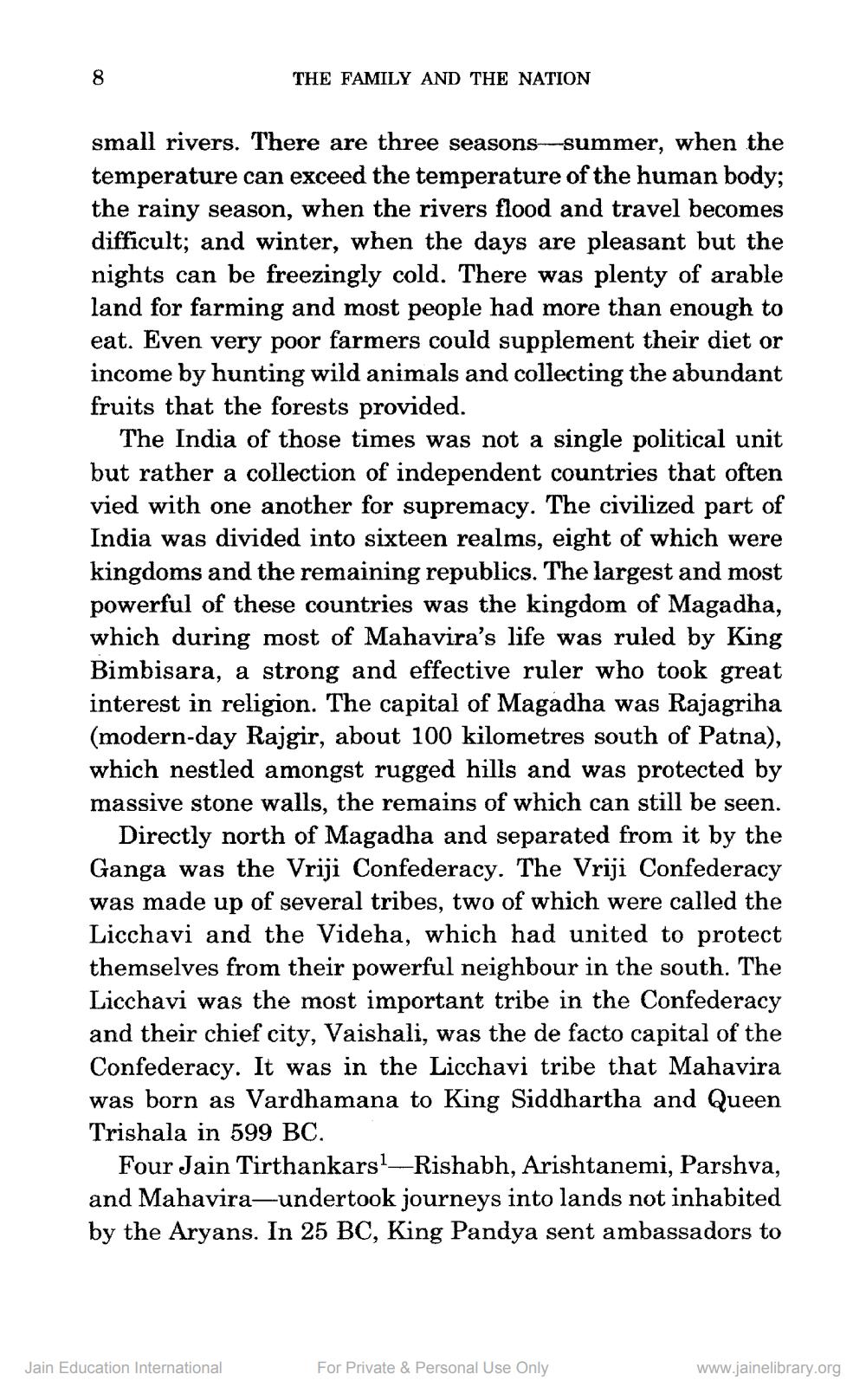________________
THE FAMILY AND THE NATION
small rivers. There are three seasons--summer, when the temperature can exceed the temperature of the human body; the rainy season, when the rivers flood and travel becomes difficult; and winter, when the days are pleasant but the nights can be freezingly cold. There was plenty of arable land for farming and most people had more than enough to eat. Even very poor farmers could supplement their diet or income by hunting wild animals and collecting the abundant fruits that the forests provided.
The India of those times was not a single political unit but rather a collection of independent countries that often vied with one another for supremacy. The civilized part of India was divided into sixteen realms, eight of which were kingdoms and the remaining republics. The largest and most powerful of these countries was the kingdom of Magadha, which during most of Mahavira's life was ruled by King Bimbisara, a strong and effective ruler who took great interest in religion. The capital of Magadha was Rajagriha (modern-day Rajgir, about 100 kilometres south of Patna), which nestled amongst rugged hills and was protected by massive stone walls, the remains of which can still be seen.
Directly north of Magadha and separated from it by the Ganga was the Vriji Confederacy. The Vriji Confederacy was made up of several tribes, two of which were called the Licchavi and the Videha, which had united to protect themselves from their powerful neighbour in the south. The Licchavi was the most important tribe in the Confederacy and their chief city, Vaishali, was the de facto capital of the Confederacy. It was in the Licchavi tribe that Mahavira was born as Vardhamana to King Siddhartha and Queen Trishala in 599 BC.
Four Jain Tirthankars?—Rishabh, Arishtanemi, Parshva, and Mahavira-undertook journeys into lands not inhabited by the Aryans. In 25 BC, King Pandya sent ambassadors to
Jain Education International
For Private & Personal Use Only
www.jainelibrary.org




